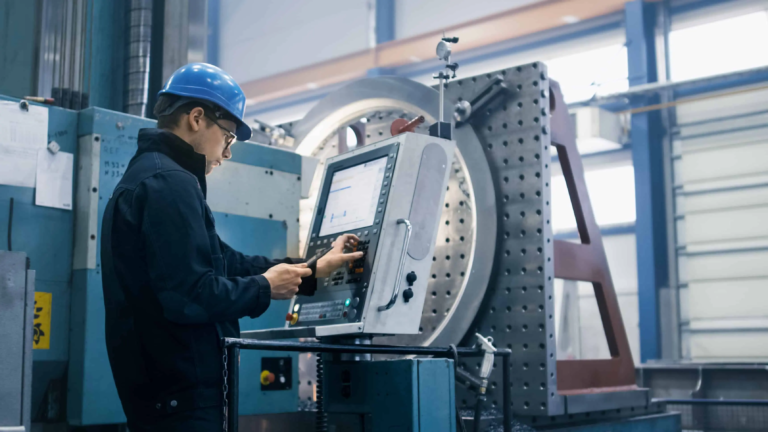In CNC machining centers, understanding specifications is essential to ensure that the equipment meets the requirements of the manufacturing process. The CNC machining center is highly versatile and can perform a wide range of operations, including milling, drilling and attacking, making it an essential tool in many industries. In this article, we will dig into the details of the CNC machining center specifications, explore its key components, features, and how to choose the right one for your needs.
Key components of CNC machining center specifications
- Axis and motion: The CNC machining center can have up to five axes, which allows movement to move in different directions. The most common configurations are 3-axis (X, Y, Z), 4-axis (X, Y, Z and one rotation axis) and 5-axis (X, Y, Z and two rotation axis). The number of axes determines the complexity of the parts that can be manufactured.
- Spindle speed and power: The spindle is the core of the CNC machining center, responsible for holding the cutting tool. The spindle speed (measured in rotation per minute, RPM) and power (measured with horsepower, HP or KWATTS, KW) are crucial to determine the machine’s ability to effectively cut different materials.
- Travel distance and work area: The travel distance refers to the maximum distance the machine axis can move along the X, Y and Z axes. This defines the maximum size of the part that can be machined. The machine’s workspace or envelope is also a necessary consideration as it must be large enough to accommodate the parts manufactured.
- Feed rate and acceleration: Feed rate (the speed at which the cutting tool moves in the material) and acceleration (how the speed at which the machine can change the speed) will affect the processing time and surface finish of the part.
- Accuracy and accuracy: Specifications such as position accuracy, repeatability and resolution are critical to ensuring that machining parts meet the required tolerances and quality standards.
- Control systems and software: The CNC control system is the brain of the machining center, responsible for executing machining procedures. Advanced control systems provide features such as simulation, automatic tool length measurement and adaptive control, enhanced machine performance and user experience.
Select the correct CNC machining center
Choosing a CNC machining center involves considering several factors, including the type of material to be processed, the complexity and size of the part, the amount of production required, and the available budget. For example, machining centers with higher spindle speeds and more shafts are more suitable for complex high-precision parts, while parts with larger workspaces are ideal for larger components.
Furthermore, the choice between a vertical machining center (VMC) and a horizontal machining center (HMC) depends on the specific application. VMCs are often more versatile and easy to use, making them suitable for a wide range of applications, while HMCs can provide better chip removal and are often the first choice for machining large, complex parts.
in conclusion
CNC machining centers are complex machines that play a crucial role in modern manufacturing. Understanding its specifications is essential to selecting the right machine for a particular application and ensuring high-quality parts are produced. By taking into account factors such as shaft and movement, spindle speed and power, travel distance, feed rate, accuracy, and control systems, manufacturers can optimize their machining operations, improve efficiency and reduce costs. As technology continues to evolve, CNC machining centers will remain at the forefront of manufacturing innovation, providing unparalleled accuracy, speed and versatility.
FAQ
-
What is the difference between 3-axis, 4-axis and 5-axis CNC machining centers?
- The main differences are the number of shafts and the complexity of the parts that can be machined. A 3-axis machine can perform basic milling operations, a 4-axis adds a rotation axis for more complex parts, while a 5-axis machine can use two rotation axis to machining very complex shapes.
-
How to select the correct spindle speed for CNC machining operations?
- The spindle speed depends on the material being processed, the tools being used, and the operation (milling, drilling, etc.). Generally, harder materials require lower spindle speeds, while softer materials can be processed at higher speeds.
-
What is the importance of accuracy and accuracy of CNC machining centers?
- Accuracy and accuracy are essential to ensure that the machined parts meet the required dimensional and quality standards. High accuracy and accuracy reduce the need for post-operative procedures, saving time and cost.
-
Can CNC machining centers make parts from any material?
- Although CNC machining centers are very versatile, the choice of materials also depends on the specifications of the machine, such as spindle power and speed. Most materials, including metals, plastics and composites, can be processed, but for some materials, a coolant system (such as a coolant system) may be required.
- How often should CNC machining centers be maintained?
- Regular maintenance is critical to ensuring the life and performance of CNC machining centers. This includes daily inspections, weekly cleaning and scheduled professional maintenance to prevent wear and tear.

















